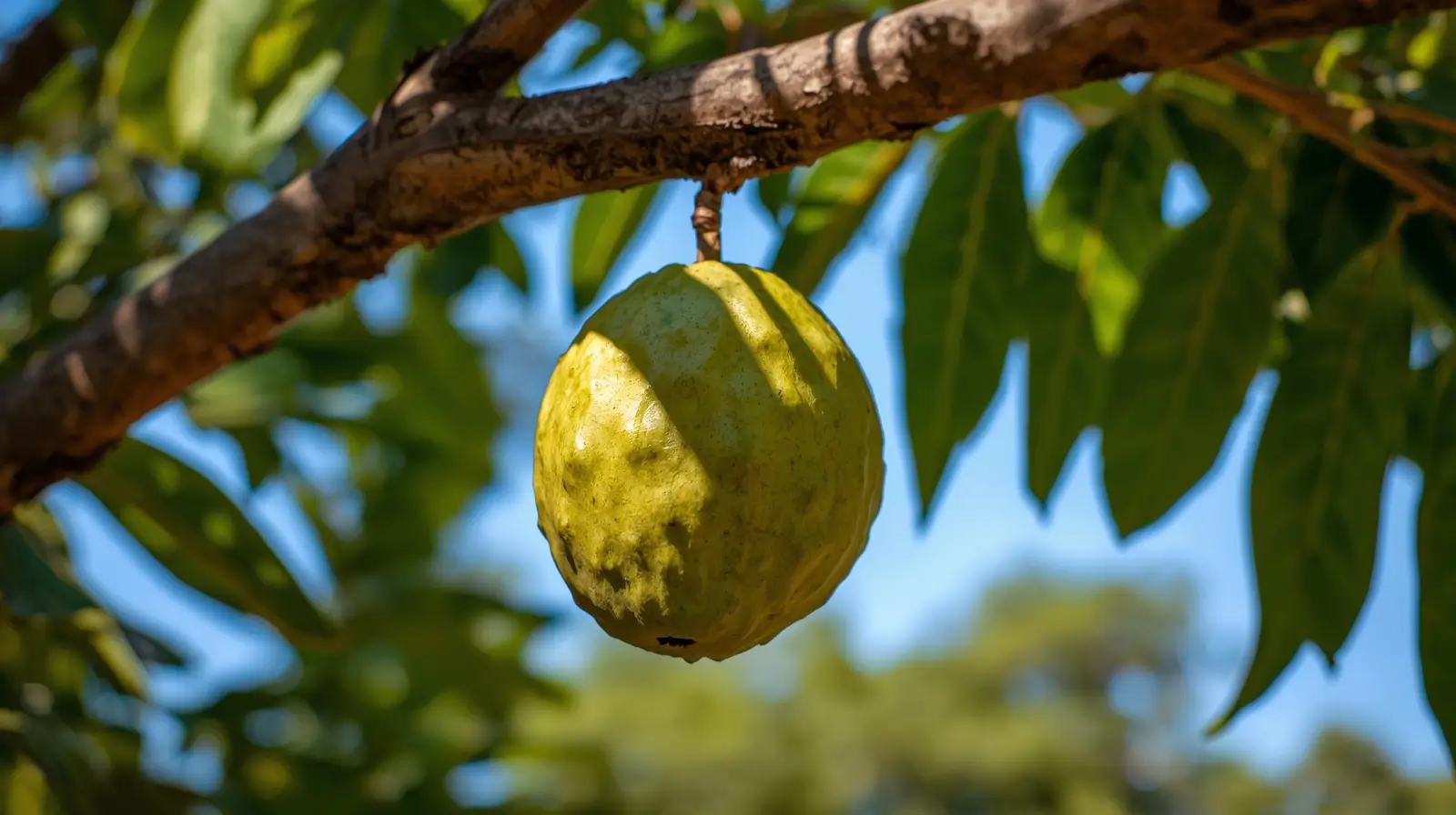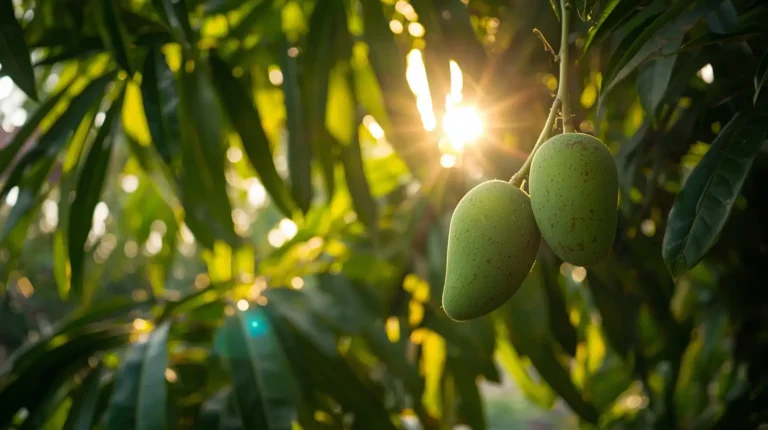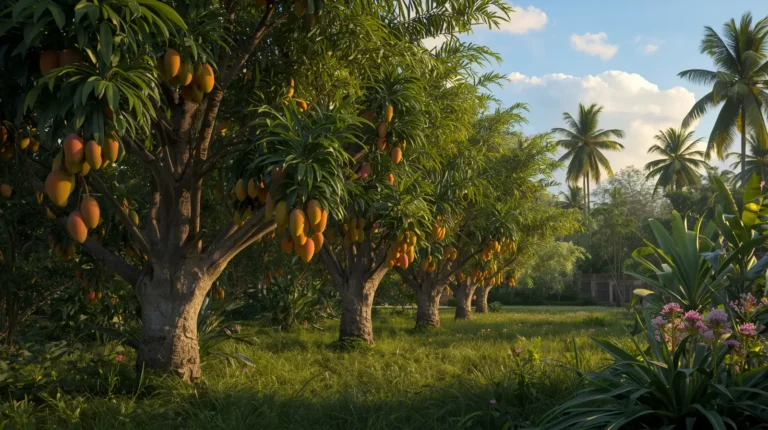When I first decided to start growing a tropical soursop tree (how to plant soursop tree) (also known as Annona muricata) in my backyard, I learned that choosing the right spot is critical because the place where you plant affects how healthy and fruiting the fruit will be later during harvesting. In this beginner’s guide, I always recommend focusing on well-draining soil and steady warmth to support steady growth of this sweet tropical tree. Once the basic environment is set, caring for the plant becomes easier, allowing you to enjoy its lush foliage and eventually your own tropical harvest at home.
Why choosing the right spot matters for your soursop tree?
Choosing the best location when planting your soursop tree is what helps it grow healthier, stronger and begin fruiting faster in 2–3 years instead of 5+ years, especially when the soil is proper and the environment supports tropical gardening dreams.
- A good spot can encourage steady growth with less disease pressure
- Right place helps maximize sun exposure for bigger harvests
- It helps ensure low-maintenance care long-term
- A wrong place can make or break how your trees perform
Can other fruit trees benefit from the same planting tips?
Cherimoya, atemoya, and custard apples can thrive using the same planting strategy, especially in warm temperatures with excellent drainage and slightly acidic soil.
They do best under full sun exposure, where beginner gardeners can support steady growth without extra effort.
Avoid shady spots or heavy clay areas because they often cause slow root development and lead to diseases in the long run.
- Common mistake: Planting in heavy clay areas that hold water and weaken roots.
Read Also: 7 Amazing Dried Soursop Leaves Benefits for Health
Step-by-Step Guide: How to Plant Your Soursop Tree in the Best Spot

- Use a Sunlight meter to pick a full-sun location that gets 6–8+ hours of direct light daily.
- Test your soil pH using a soil pH test kit to confirm it’s slightly acidic between 5.5 and 6.5.
- Check drainage — if water pools for an hour after rain, choose another spot or build a raised bed.
- Dig a planting hole twice as wide but no deeper than the root ball.
- Amend the soil — mix organic compost in for a nutrient boost.
- Plant at the same depth — never bury the trunk base.
- Water deeply to saturate the root zone after planting.
- Add mulch and form a mulch ring few inches away from the trunk.
- If the area gets heavy rains, create a slight mound to improve drainage.
- Always keep airflow open and avoid overcrowding.
- Do not step or compact the soil after planting.
- Observe moisture daily for first two weeks.
Pro Tip: A shovel is fine, but using loose soil structure around roots improves early growth 🌱
How Soursop Trees Grow: Quick Science Behind It
Soursop trees have shallow root systems, so well-draining and slightly acidic soils are critical for helping them thrive in warm and humid conditions. They hate wet feet, meaning waterlogged soil can damage roots, while strong sunlight helps them produce abundant flowers and fruits. According to University of Florida IFAS Extension, proper planting and thoughtful spacing are crucial for fast growth and long-term productivity.
Read Also: 5 Hidden Places Where Soursop Grows Beautifully
Best practices and common mistakes for planting Soursop
Do:
- Choose locations that are protected from strong winds to help young trees grow steady.
- Use sandy or sandy-loam soil types to support drainage and avoid root stress.
- Apply mulch to retain moisture and suppress weeds around the base.
Don’t:
- Plant in swampy or low-lying areas where water collects.
- Overwater during the rainy season, which can cause root rot.
- Fertilize heavily in the first 6 months, as young roots are sensitive.
What to expect after planting your Soursop Tree
📅 First 1–2 Weeks:
- The tree may look stressed while adjusting, so water regularly but avoid soggy soil.
- Gentle care at this stage is key to helping it settle.
📅 Month 2–6:
- Do light pruning to remove weak branches and support healthy shaping.
📅 Year 2–3:
- You may see first blooms and potential fruits — this is where patience, planning, and time bring delicious results.
Read Also: 7 Powerful Soursop Fertilizers for Faster Growth & Sweeter Fruit
Best soil for growing Soursop Trees

For strong growth, choose a soil type that stays between pH 5.5 and pH 6.5 and supports excellent drainage in your yard.
- Choose sandy loam or loamy sand to keep roots breathing and avoid compact clay soils.
- Add organic matter to keep the soil rich in nutrients for steady growth.
- Always check how water drains — it should move quickly after rain.
- Use raised beds if your ground tends to hold water easily.
This helps your tree stay healthy and well-balanced from the very beginning.
How big do Soursop Trees get?

When properly planted and cared for, a soursop can grow quite large depending on space and climate.
- In the first year, the tree usually reaches 3–6 feet.
- By year 2–3, it may grow around 8–12 feet.
- Mature trees in tropical regions can reach 15–30 feet, while container-grown trees stay smaller (around 6–10 feet) with regular pruning.
This helps you plan where to place your tree so it can grow comfortably.

Conclusion
Growing a soursop tree is a rewarding experience when you pay attention to the right soil, sunlight, and care from the beginning. Whether you plant it in the ground or keep it container-grown, knowing how fast it grows and what conditions it prefers helps you guide its development. With patience, steady watering, and occasional pruning, your soursop tree can thrive and eventually reward you with sweet, tropical fruits right from your own space.
Read Also:
- Tropical Fruit Trees: Grow Exotic Paradise at Home (Guide)
- Gardening & Plant Care Guide for Thriving Plants
FAQs
- How long does it take for a soursop tree to produce fruit?
Most soursop trees begin fruiting around 2–3 years after planting if growing conditions are warm and favorable. - Can I grow a soursop tree indoors?
Yes, but it must get full sun for several hours daily. A bright balcony, patio, or greenhouse is ideal. Indoors with weak light can slow growth. - How often should I water my soursop tree?
Water regularly, but avoid soggy soil. Soursop trees dislike “wet feet,” so ensure proper drainage. - Do I need to prune my soursop tree?
Yes — light pruning helps shape the tree and remove weak branches, especially in the first year 2–3 of growth. - What climate is best for soursop?
Soursop prefers warm, humid, tropical regions without frost. Even brief cold snaps can damage young trees.




